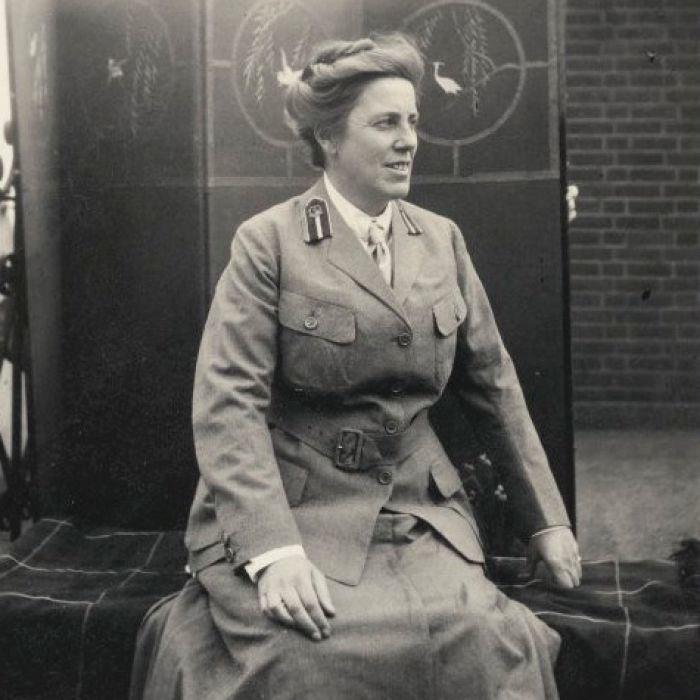Name Agnes Bennett | ||
 | ||
Died November 27, 1960, Wellington, New Zealand | ||
Agnes Elizabeth Lloyd Bennett OBE (24 June 1872 – 27 November 1960) was a New Zealand doctor, a Chief Medical Officer of a World War I medical unit and later was awarded an O.B.E. for her services in improving the health of women and children.
Contents
Early life
She was born in Sydney, New South Wales, Australia on 24 June 1872, the sixth child of W. C. Bennett, and his first wife Agnes Amelia, ne Hays. Bennett attended Sydney Girls High School, as well as Cheltenham Ladies' College, Dulwich Girls' High School and Abbotsleigh. She won a scholarship in 1890 and studied science at the University of Sydney (B.Sc., 1894); she was secretary of and a night-school teacher for the Women's Association (later University Women's Settlement).
Life as a Medical Practitioner
Initially unable to find a job as a medical practitioner, Bennett worked for a time as a teacher and governess, then left Australia in 1895 to study at the College of Medicine for Women, University of Edinburgh (M.B., Ch.M., 1899). She returned to Sydney in 1901 and set up in private practice in Darlinghurst Road but although she gave free medical advice she was forced to give up her practice because of the then common prejudices against female doctors. She briefly worked at Callan Park, the hospital for the Insane before leaving in 1905 to take over the practice of a woman doctor in Wellington, New Zealand. This time the practice thrived. She was chief medical officer at St Helen's maternity hospital, and honorary physician to the children's ward of Wellington Hospital from 1910. In 1911 she completed her M.D. at Edinburgh.
World War I
In 1915 Agnes Bennett became the first female commissioned officer in the British Army, when as a captain she worked as a medical officer in war hospitals in Cairo. When the work came to an end she sailed for England, uncertain what to do next. Almost immediately she met up with Elsie Inglis in London who asked her to work with the Scottish Women's Hospitals. On 2 August 1916, the America Unit, in the command of Dr Bennett, reached Southampton preparatory to embarking on the hospital ship Dunluce Castle for Salonika. The ship arrived in Salonika on 13 August and on the 17th of that month Dr Bennett travelled by car to visit the proposed camp site.
Originally intended as a base hospital at Salonika, the unit's status was changed. As the only hospital for the use of the defeated Third Serbian Army, it would now be situated near the front, acting more or less as a casualty clearing station. Finally on 7 September 1916 the first vehicles of her thirty-nine car convoy (Mrs Harley's Unit included), left Salonika on the road to Ostrovo Lake. By 11 September, Dr Bennett was able to record of the Ostrovo Unit "The hospital is gradually getting into being-progress slow, partly on account of labour." By 28 September she as wring: "We have admitted 204 patients up to today; ten of the staff are ill which means 14 off work..."
While Chief Medical Office of the Ostrovo Unit Dr Bennett was concerned with the difficulties the unit faced being so far from the front. Far too many men were losing their lives through the delay in getting them down to her hospital. There was also the problem of malaria. Although, Ostrovo was up in the hills and the malaria threat was not as bad as in Salonika, it still claimed lives and would ultimately end her term as CMO when she fell victim to the disease as well. Gradually as the Serbian fighting line pushed the enemy back, the hospital work eased. In late October she wrote: "Our 400th patient admitted today." By winter conditions became more severe. Fighting died down and the roads became impassable. The hospital was nearly isolated. Cases of scurvy were brought in occasionally, for food was short in the front line. In December a site was chosen for the outpost hospital at Dobraveni and the personnel sent off.
By the new year Dr Bennett was plagued by internal problems and worry over the outpost at Dobraveni. By late winter German air raids became more frequent and the outpost was moved in March with the help of 100 German prisoners. With summer came the threat of malaria again. Dr Bennett succumbed to the disease and was forced to resign because of ill health. She was replaced by another Australian Mary De Garis.
Later years and death
Dr Bennet became the first president of the Wellington branch of the International Federation of University Women in 1923, and represented New Zealand at its world conference at Cracow, Poland, in 1936. She had visited Australia often since 1905, and in 1938-39 was medical officer at the hospital at Burketown, North Queensland. She returned to Wellington and in 1939 helped to form the Women's War Service Auxiliary.
Between 1940 and 1942 she worked in English hospitals and, on returning to New Zealand, lectured to the women's services on venereal disease and birth control. Dr Bennett was appointed O.B.E. in 1948; she died in Wellington on 27 November 1960 and was cremated with Presbyterian rites. She contributed largely to the improvement of maternal and infant medical care in New Zealand, and through example, argument and organization, did much to advance women's status.
